I know, I know, who doesn’t know how to cook pasta? There actually is an art to it. If you follow some simple rules you can forget about noodle “marriages” (bunches of noodles sticking together), pasty sticky noodles or undercooked pasta.
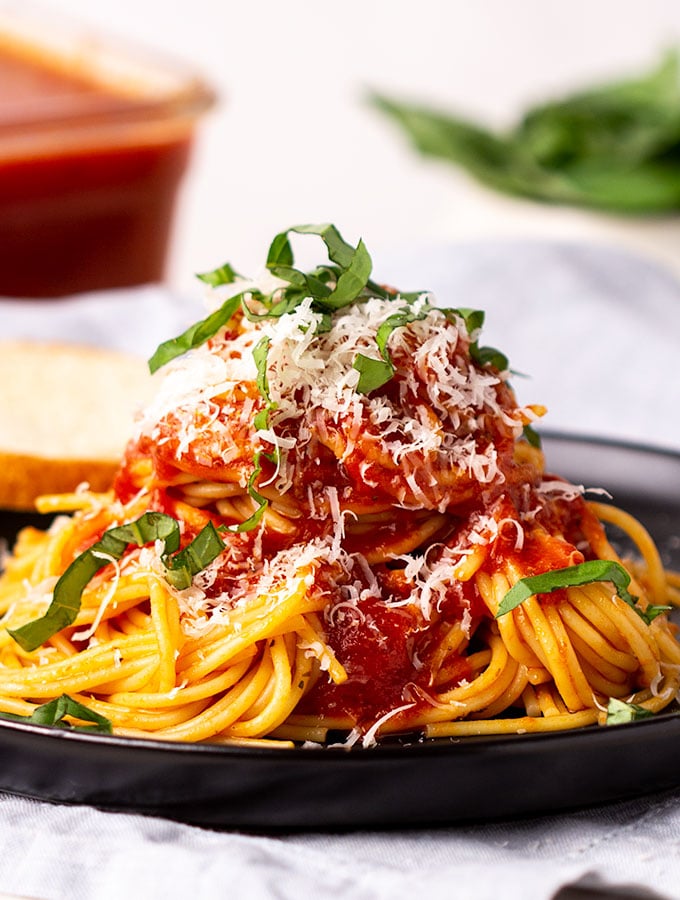
Sometimes it’s the simple things in life that need just a little bit of explaining. Because cooking pasta is as simple as dumping noodle into hot water that we never stop to think if there’s a better way to improve our results. Especially for something that most of us eat all the time.
Hard boiled eggs are just like that, and yes, I have a post on Perfect Steamed Hard Boil Eggs for fool proof, pure white and yellow eggs.
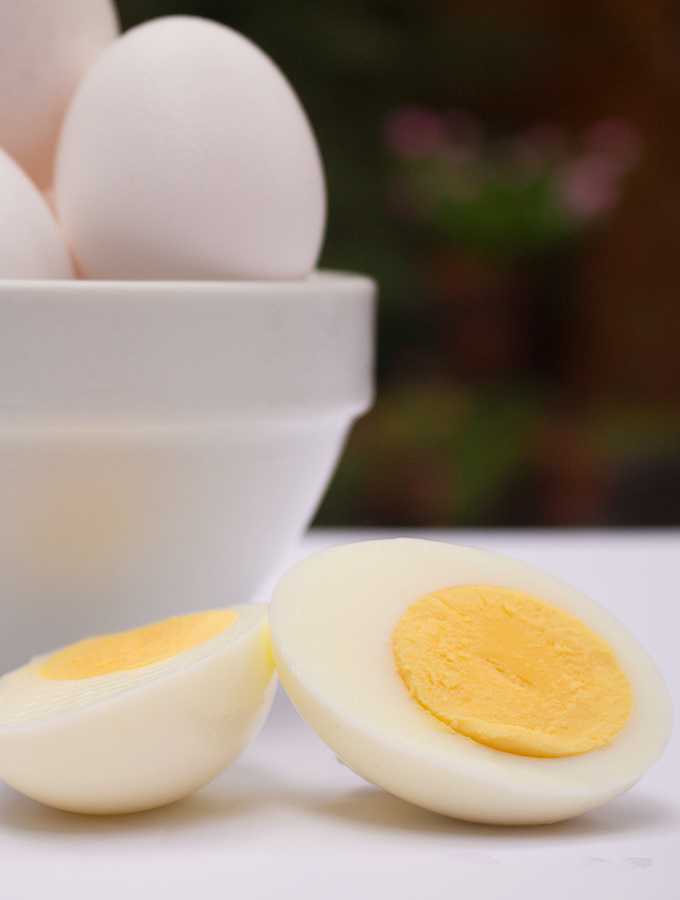
Back to How To Cook Pasta. Follow our simple guidelines below and you’ll notice a big difference in the results. I’ve been putting together ideas for “How To” posts when I ran across an article in Food & Wine On Pasta Mistakes and thus this post was born.
How To Cook Pasta
I’ll have to make another post on how to cook gluten free, vermicelli and Asian type noodles as they cook differently than typical wheat pasta, the kind we all grew up with.
Using Rapidly Boiling Water – How To Cook Pasta Tips #1
Rapidly boiling water is the key to keeping the noodles from sticking.
No, you don’t want to rinse the cooked pasta or you’ll wash off the starch that helps the pasta sauce stick to the noodles.
No, you don’t want to add oil to the water if you stick to my “Pasta Rules”.
Why rapidly boiling water? Because the motion will keep the noodles moving thus from sticking to each other. Once you drop the pasta in the boiling water give it a stir, return to a boil. Do not add a lid, do I need to say that?
Use a Large Pot – How To Cook Pasta Tips #2
My boys and I always have a back and forth discussion on this issue. I’ll walk in and they will have a pound of noodles in a 4 quart pot…………too small! You want plenty of room for the noodles to move and not stick together (see tip #1), plus you don’t want to break the noodles just to get them in the pot.
Why Add Salt To Pasta Water – How To Boil Pasta Tips #3
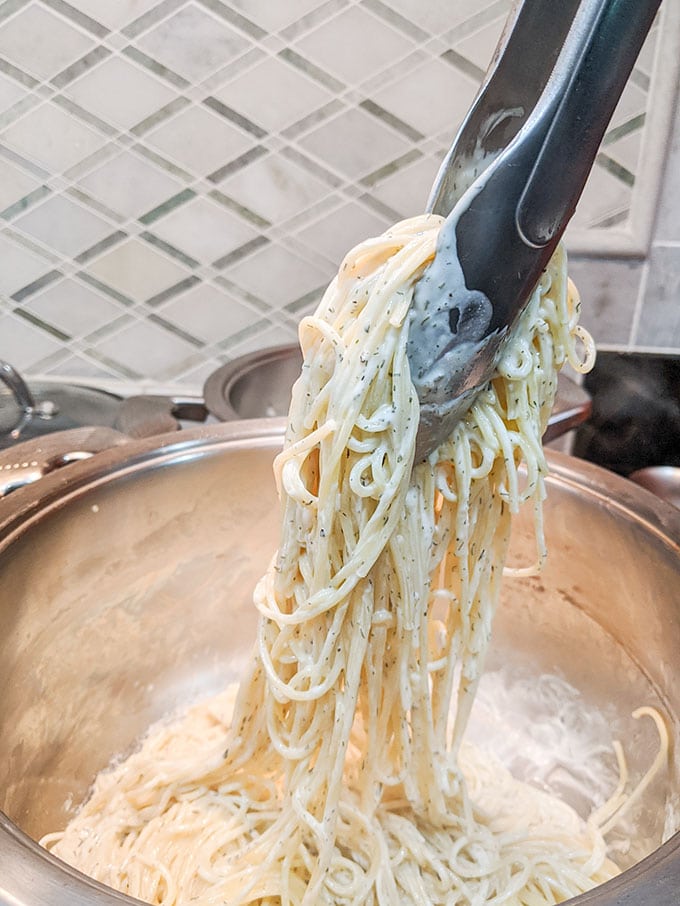
When my husband and I travelled to Italy a couple of years ago I brought along Samin Nosrat’s new cookbook Salt, Fat, Acid, Heat and devoured the book on the plane. Dave couldn’t understand how a book on basic cooking techniques could have me so enthralled. If you are a food nerd you’ll love her book! And if you’ve seen how huge the cookbook is you’d be impressed that I hauled that baby all over Italy.
Samin’s notion is that you salt water way beyond what you would typically think. Think the taste of saltwater in the ocean. Keep in mind that you aren’t actually ingesting all of that salt because some of the water will be tossed and/or reused at another time. I add a few Tablespoons of kosher salt (not table salt) to water after it’s boiling.
Why add salt after the water is boiling? Because salt raises the temperature at which water boils, so if you add salt first, before boiling, then it will take longer to get to the boiling point. We all like to save time, right?
What Does Al Dente Mean – How To Cook Pasta Tip #4
We’ve all heard the phrase al dente, but what does it mean? Al dente is an Italian phrase that means “to the tooth”.
How to cook pasta al dente isn’t hard. A couple of minutes before package directions say to remove pasta, taste a piece. You want it to have some bite to the pasta. That doesn’t mean crunch, it means you can bite through the pasta but there’s a little resistance.
If you cook pasta according to the package it’s usually a little mushy and overcooked. I like to taste the noodles about two minutes before the package directions. Use a slotted spoon, spider or tongs to remove a noodle to taste.
If you plan to add the noodles to a casserole or you want to mix immediately with hot sauce then take the pasta out of the water up to three minutes earlier than the package says since the pasta will continue cooking in the sauce or in the oven.
Uses For Pasta Water – How To Boil Pasta Tip #5
Adding a bit of your pasta water to your sauce helps thicken and makes the sauce silky, ever heard of silky pasta sauce? Maybe not, but you’ve tasted it at a good Italian restaurant. It’s the difference between typical homemade pasta and the Italian restaurant version that you dream and drool over.
You can either scoop a cup or two of pasta water out of the pot before draining in a colander. Or use tongs, a spider or a sifter to remove the pasta from the pot.
Don’t know how much pasta water to add to your sauce? Start by adding ¼ cup or so. Sauce that covers a pound of pasta typically needs about ½ to 1 cup of pasta water to bring it to the creamy consistency that you want.
Adding the reserved pasta water to any warm fat works great. So to a red tomato sauce, butter, olive oil or even fat remaining form cooking a protein.
According to Rachel Ray you can freeze the pasta sauce in ice cube trays and add to sauces or rice instead of broth.
You Might Like To Try These Simple Pasta Recipes
One Pot Pasta, there really is only one pot to clean and it’s delicious. One Pot Pasta actually cooks in a skillet.
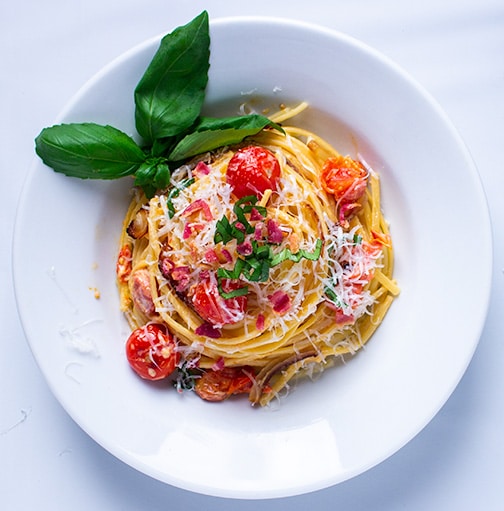
Herb Pasta Recipe, a quick pasta recipe and makes a great side dish for chicken, fish or pork.
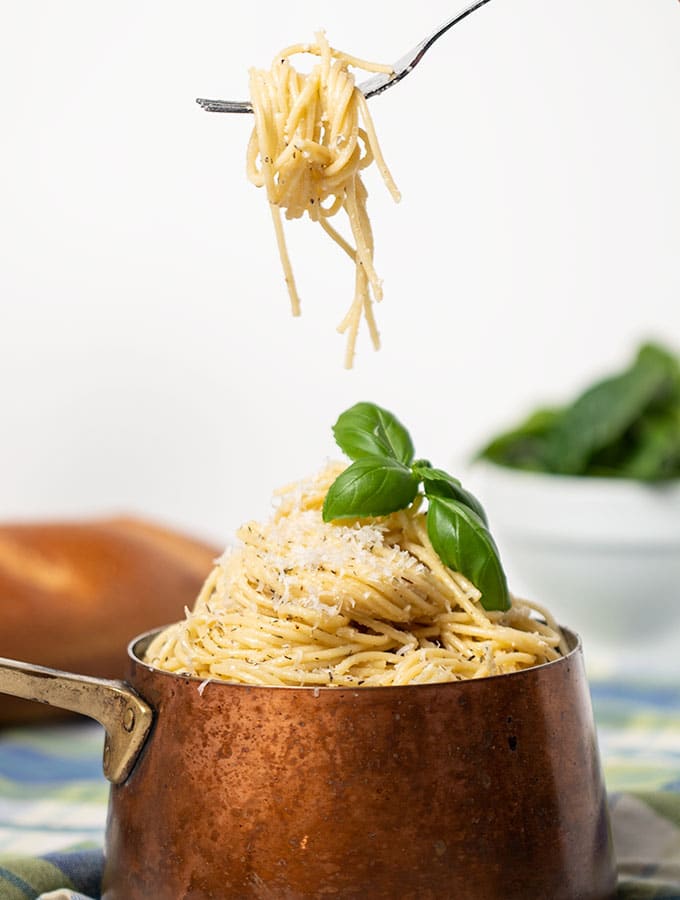
Homemade Spaghetti Sauce Recipe, inexpensive and better than store bought.
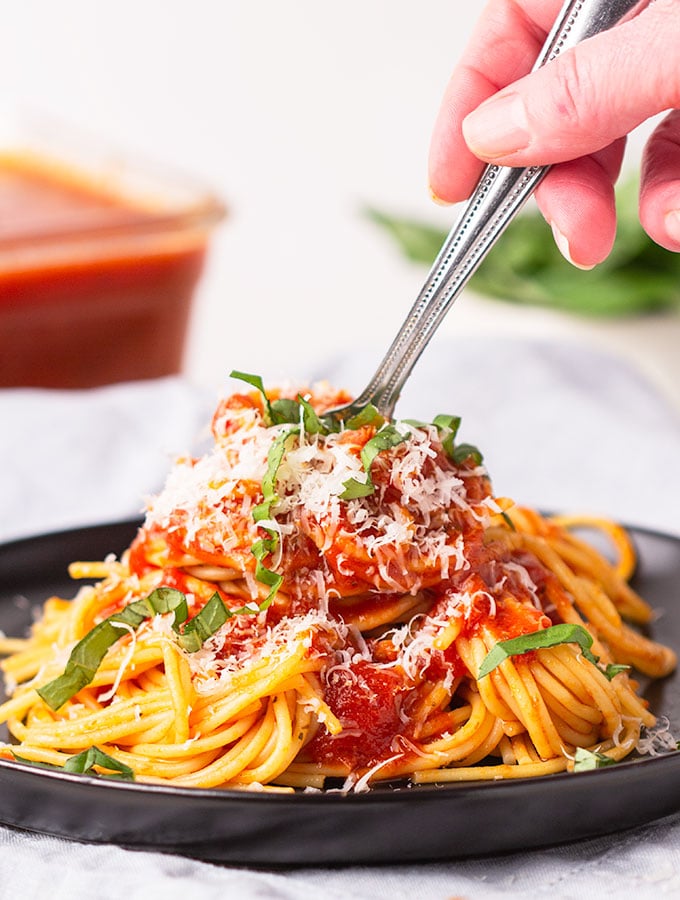
Pumpkin ravioli Recipe, simple, different and delicious.
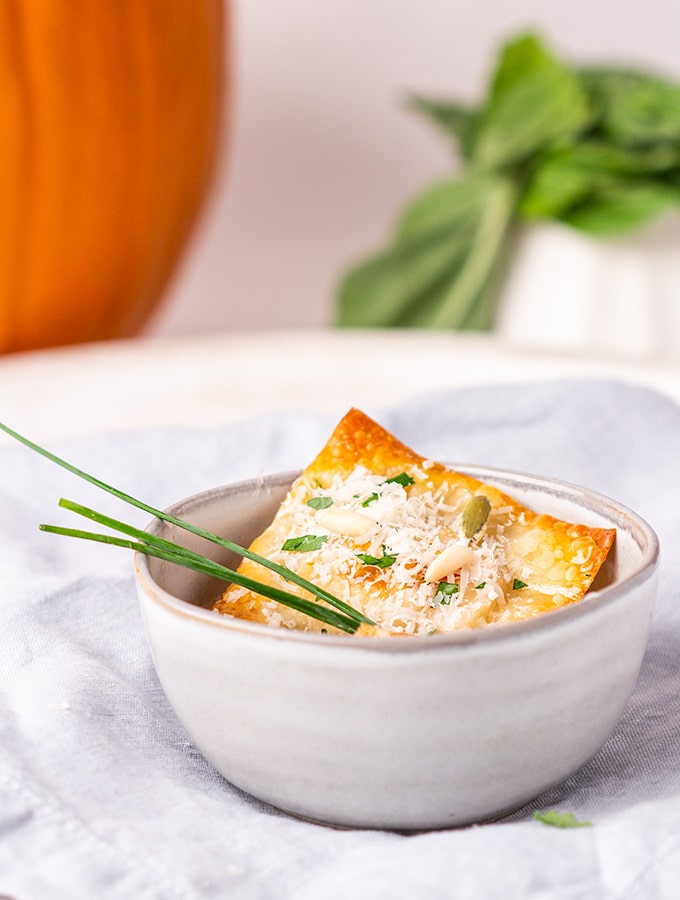
Bechamel Sauce Recipe, a mother recipe for all kinds of noodles and other things.
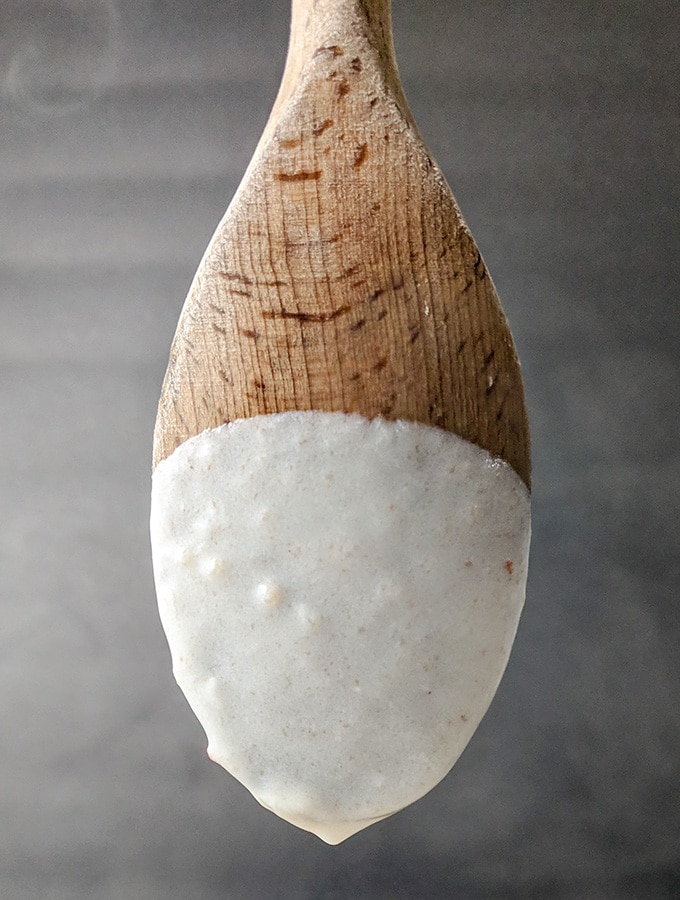
Easy Stovetop Mac and Cheese Recipe.
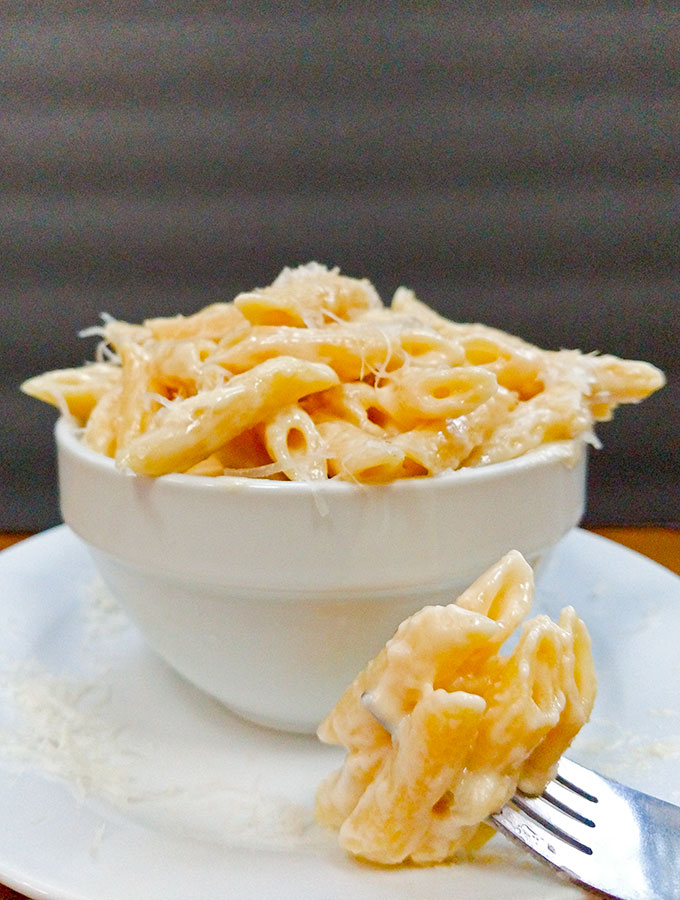
So there you have it. Who would have thought there were so many tips on how to cook pasta? If you have other suggestions or tips please reply with a comment. We all like to learn new things! And it’s typically an every day cook that knows and/or invents clever creative ways to make something happen.
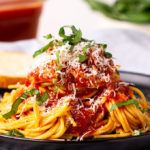
How To Cook Pasta
OK, so it's not rocket science but it does make a difference to keep a few Pasta Tips in mind when cooking noodles
Ingredients
- 1 pound pasta
- 4 quarts water
- 3 Tablespoons kosher salt
Instructions
-
Add water to pot and place over high heat. Once water is boiling add salt, return to a boil.
-
Add pasta to rapidly boiling water, stir and bring back to a boil. Stir occasionally.
-
Taste pasta about 2 minutes before directions on the box for al dente. Remove when there is a slight bite or chew to the noodles.
-
Remove pasta with tongs, spider or slotted spoon and add to warm sauce. Add a 1/4 cup of reserved pasta water to sauce and noodles for a creamy texture. Keeping adding 1/4 cup until desired consistency.
Recipe Notes
Tips: See post for 5 important tips for how to cook pasta. Main things to keep in mind are:
Use enough water to allow the noodles to move freely
Add to rapidly boiling water to keep noodles from sticking together
Add salt to the pasta water to taste like sea water
Cook for a couple of minutes less that box directions for al dente noodles
Reserve a cup or two of pasta water to add to and make sauce creamier
I loved reading your directions for cooking pasta. I’m an OLD. Cook but I learned a few things. Thanks.
And the photography is beautiful!
We’re never too old to learn new things, even for excellent cooks!